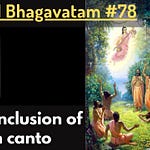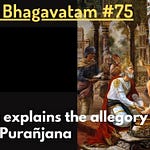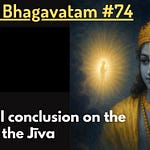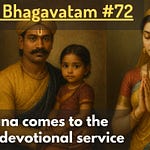The Srimad Bhagavatam is composed of numerous pastimes with deep spiritual significance. These are not random stories, but pastimes carefully selected, describing the activities of the Lord and His pure devotees. By studying these descriptions we can learn about them and thus gradually become attracted to the path of pure devotional service.
In the material platform, hearing about a person is very different from physically being with him or her, but in the spiritual platform everything is absolute and there is no difference between the person and his name and activities. Hearing about the activities of the Lord and His eternal associates means associating with them, and this association can bring us to the transcendental platform, especially when the Srimad Bhagavatam is studied alongside like-minded devotees.
The different pastimes included in the Srimad Bhagavatam are organized chronologically, starting from the beginning of the current cycle of creation. The description is not linear, like when the description jumped from the first to the sixth manvantara in the third canto to describe the pastime of Hiranyaksa fighting Lord Varaha, for example, but it generally follows the genealogical tree that started from Brahma.
Although the main purpose of studying the Srimad Bhagavatam is to absorb the spiritual knowledge it contains, studying the genealogical tree of the different personalities described helps us to connect the pastimes and to see how they form a coherent description of the history of the universe. Without this study, they appear to be just disconnected stories. We can see that several chapters of the Srimad Bhagavatam are described to describe this genealogical tree that started from Brahma, starting from chapter 4.1. If it was not important, it would not be described in such detail.












